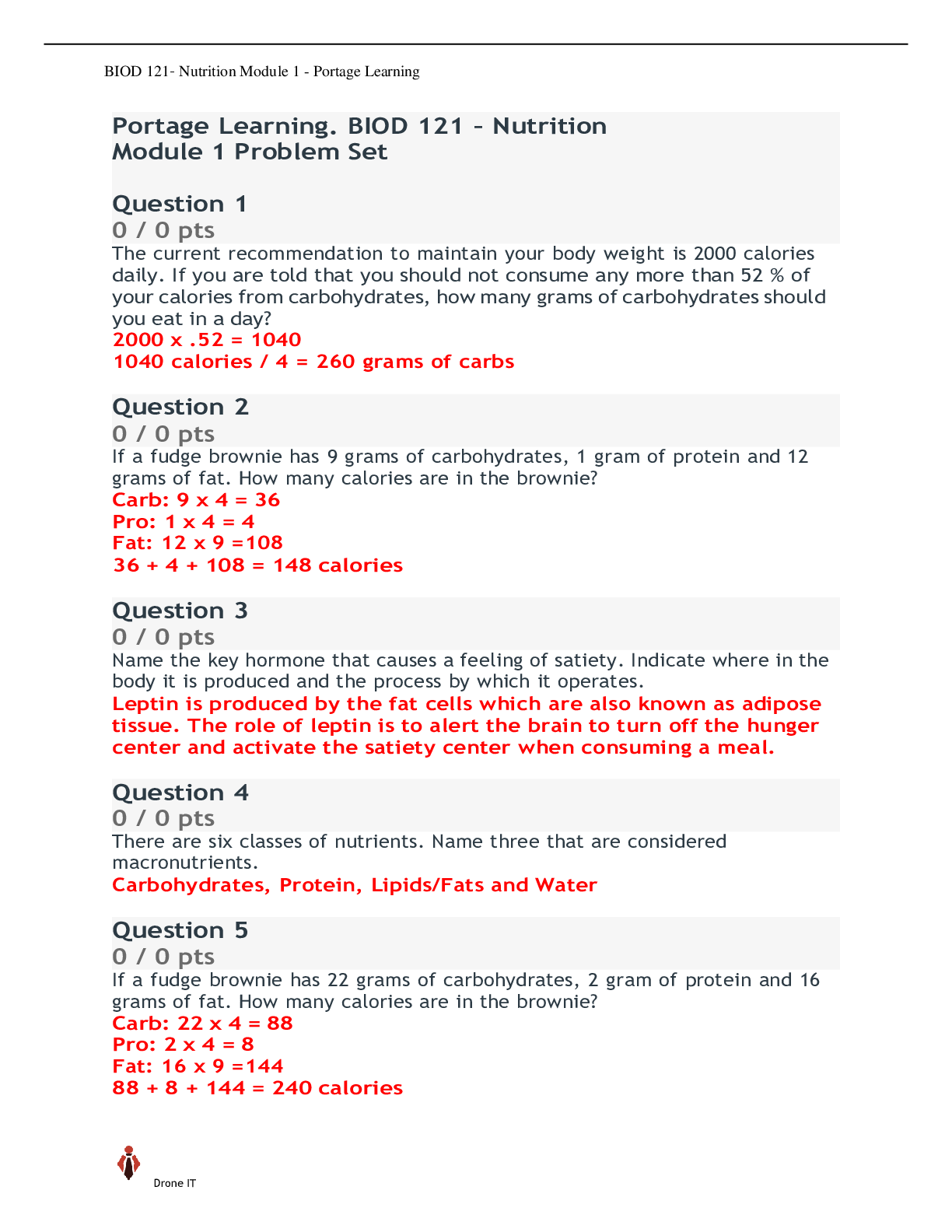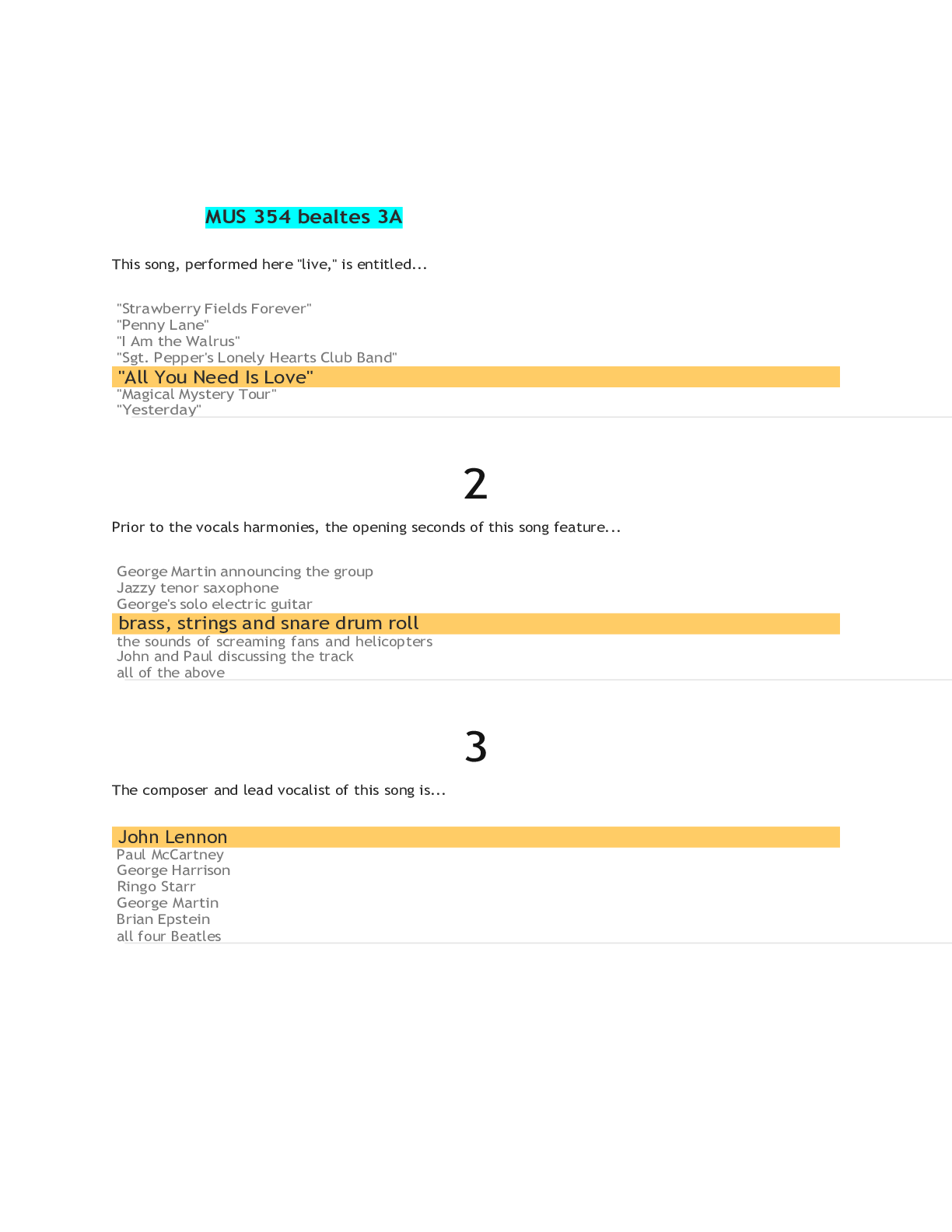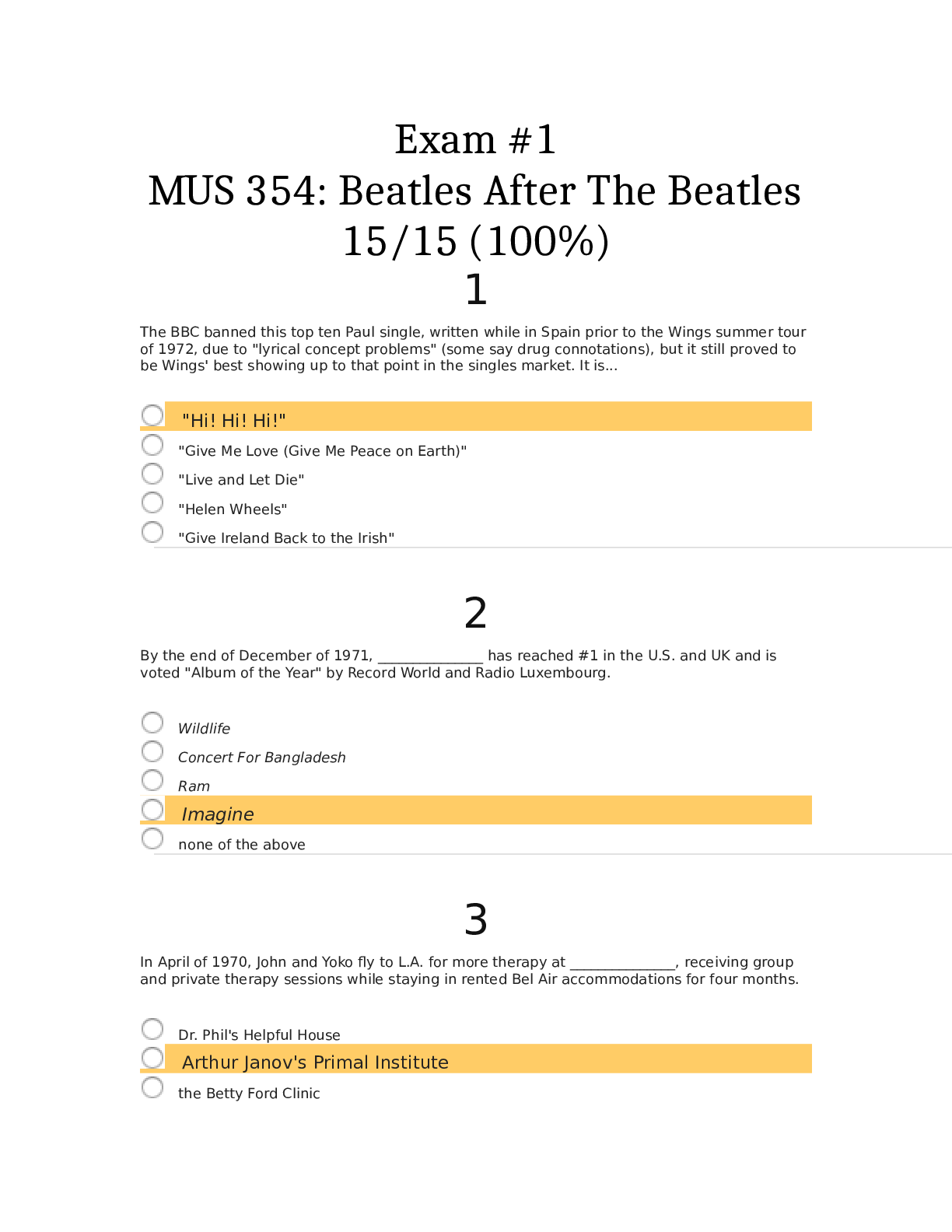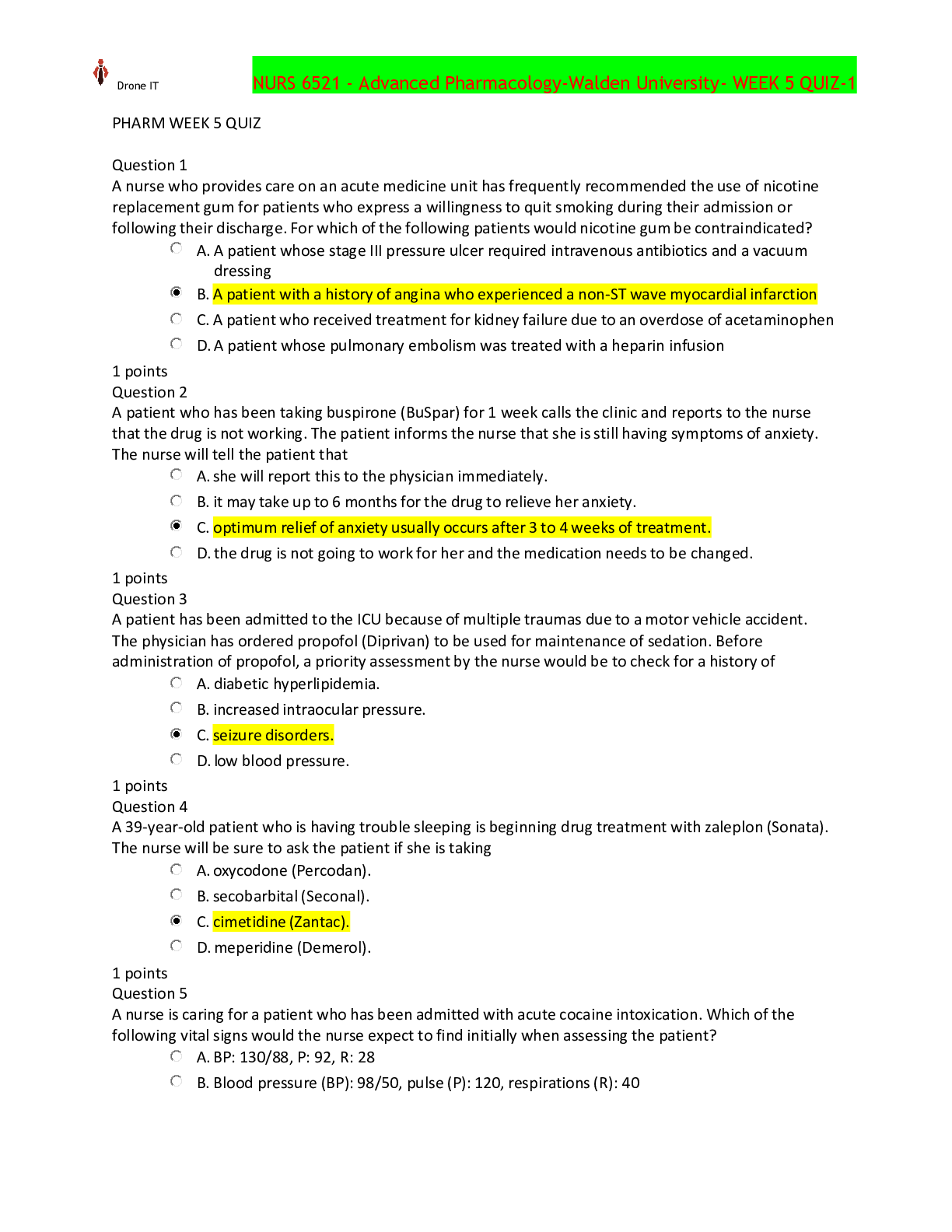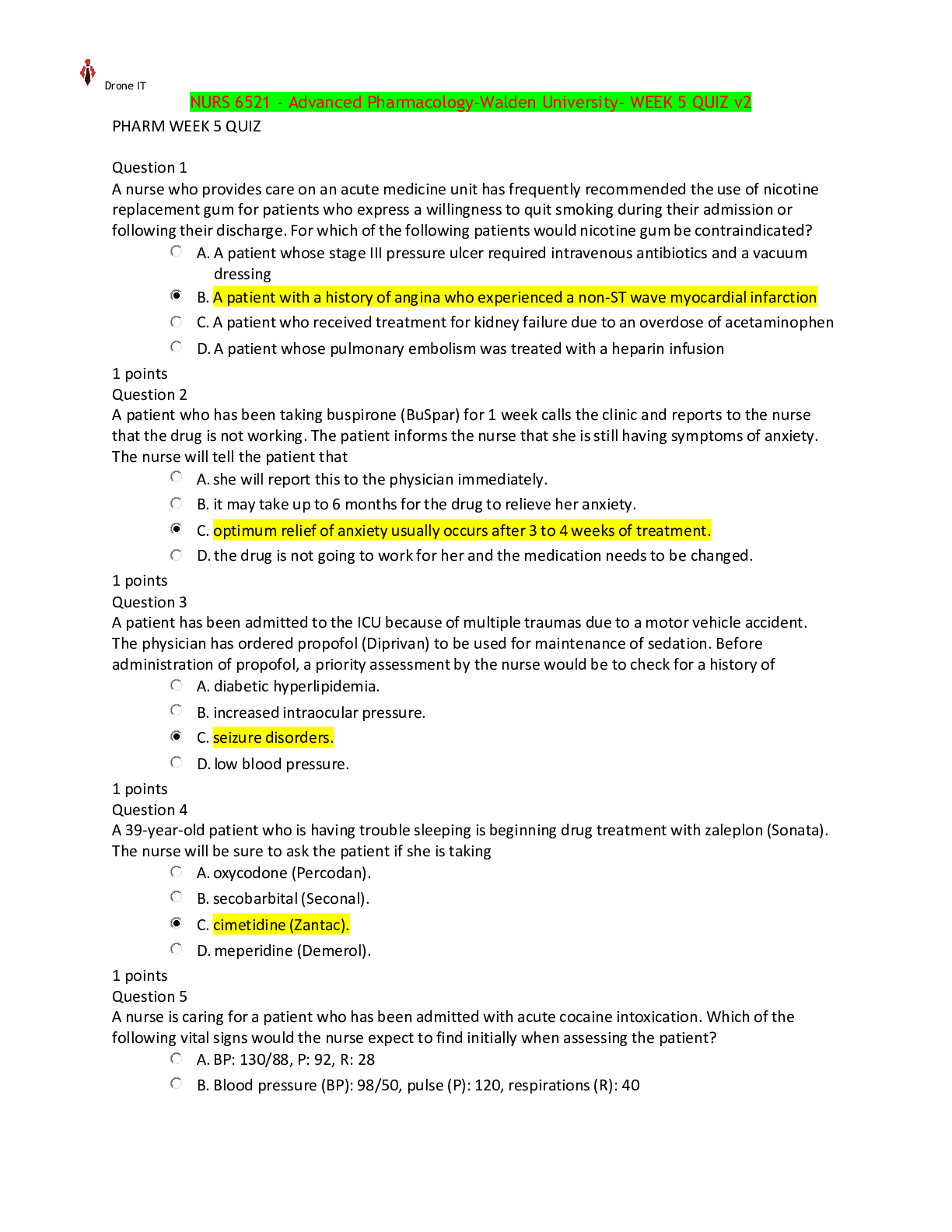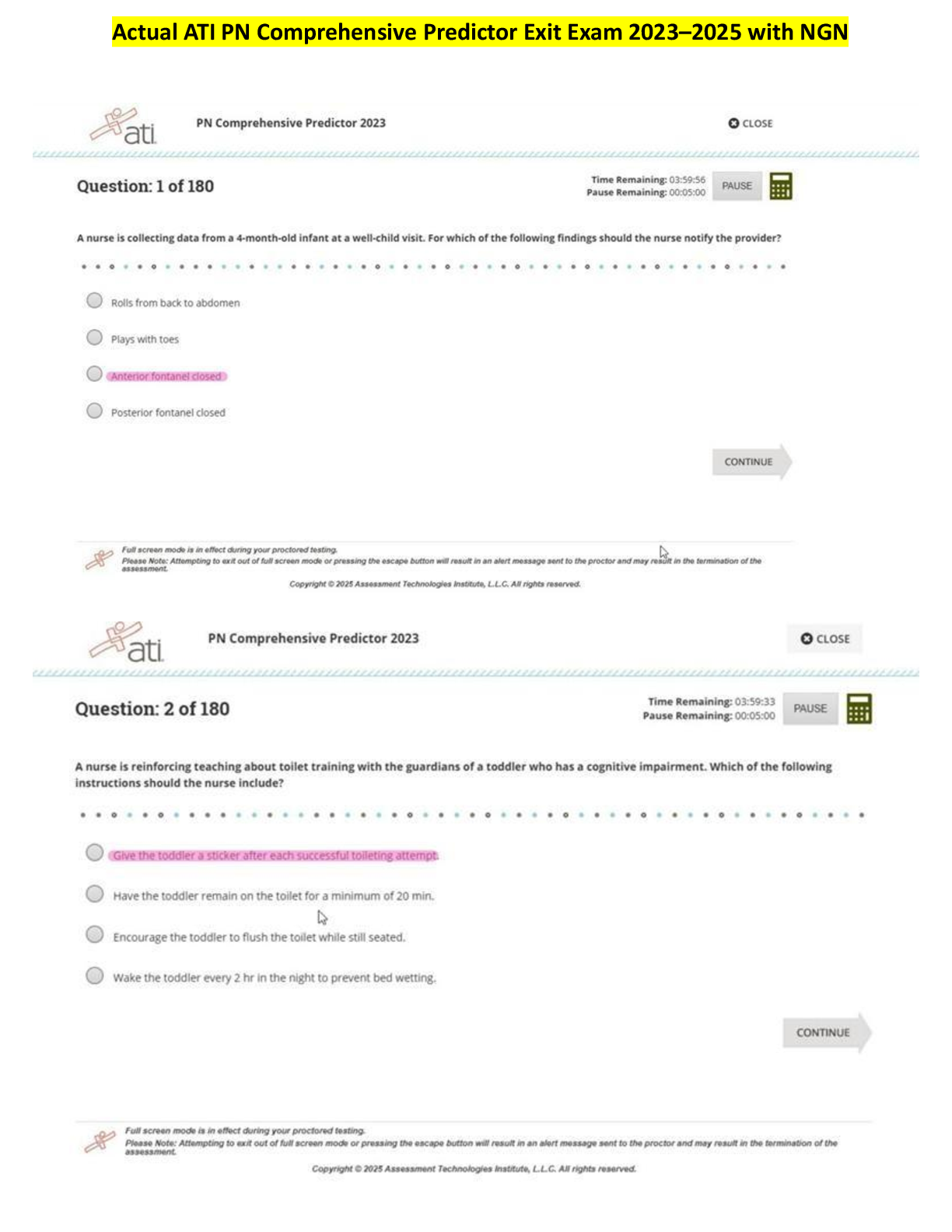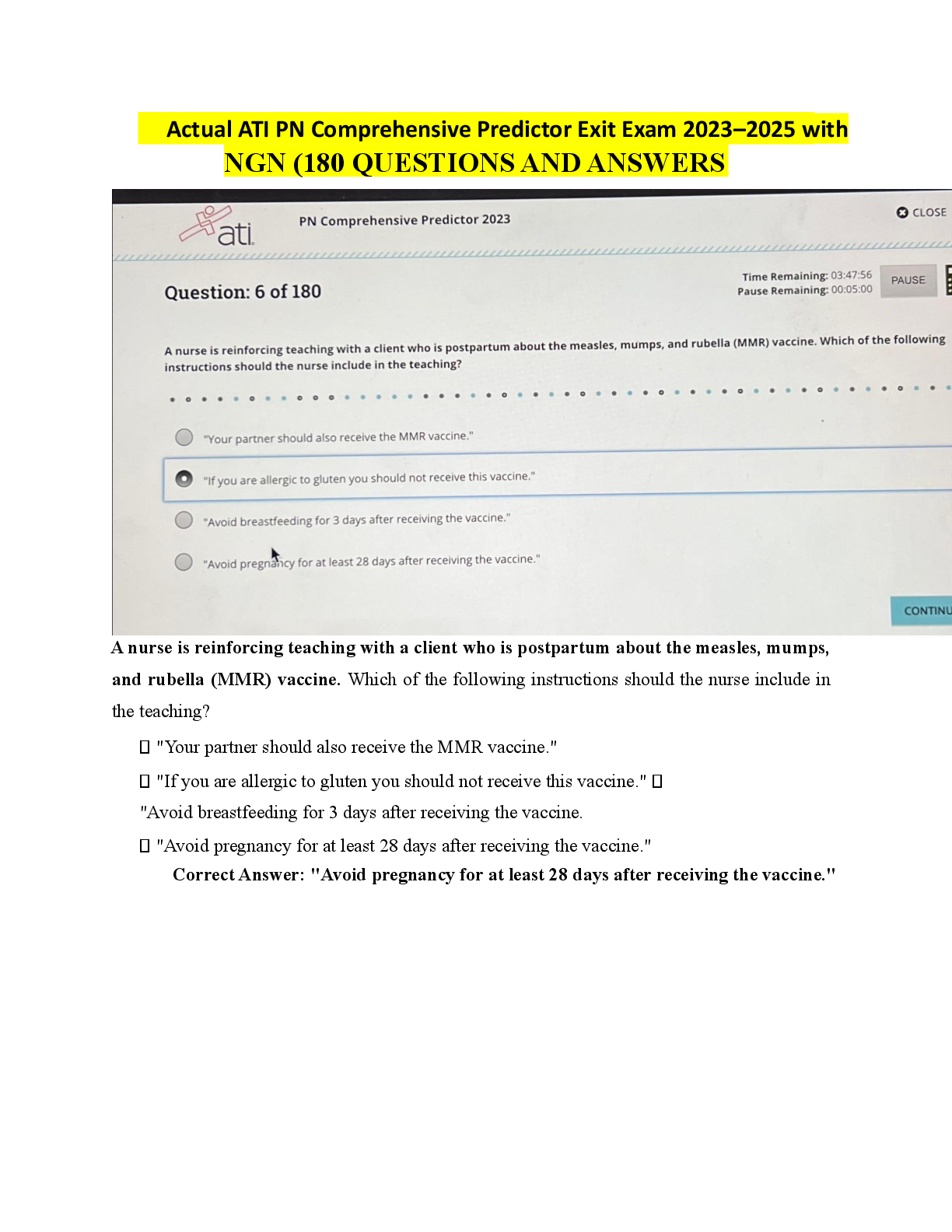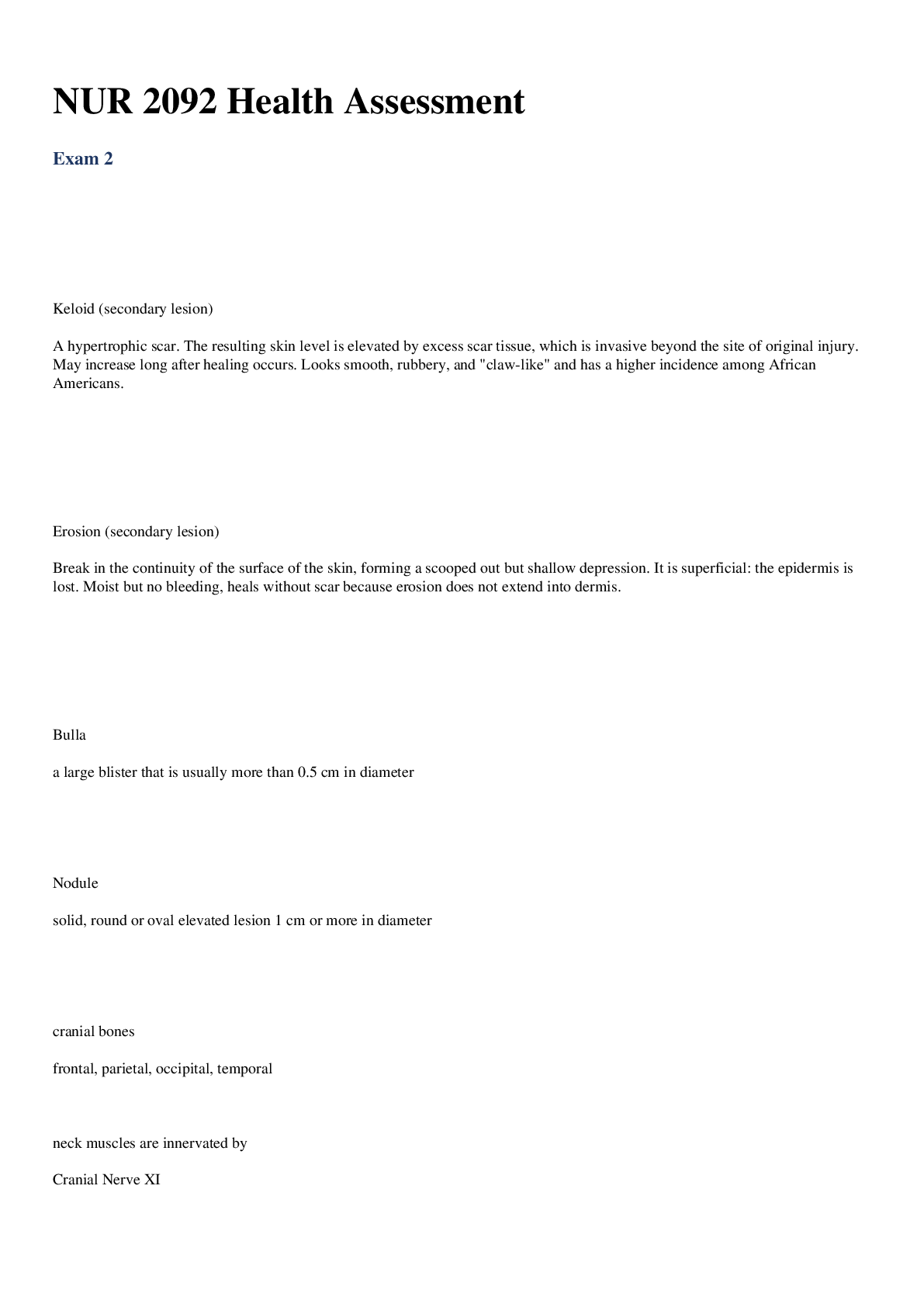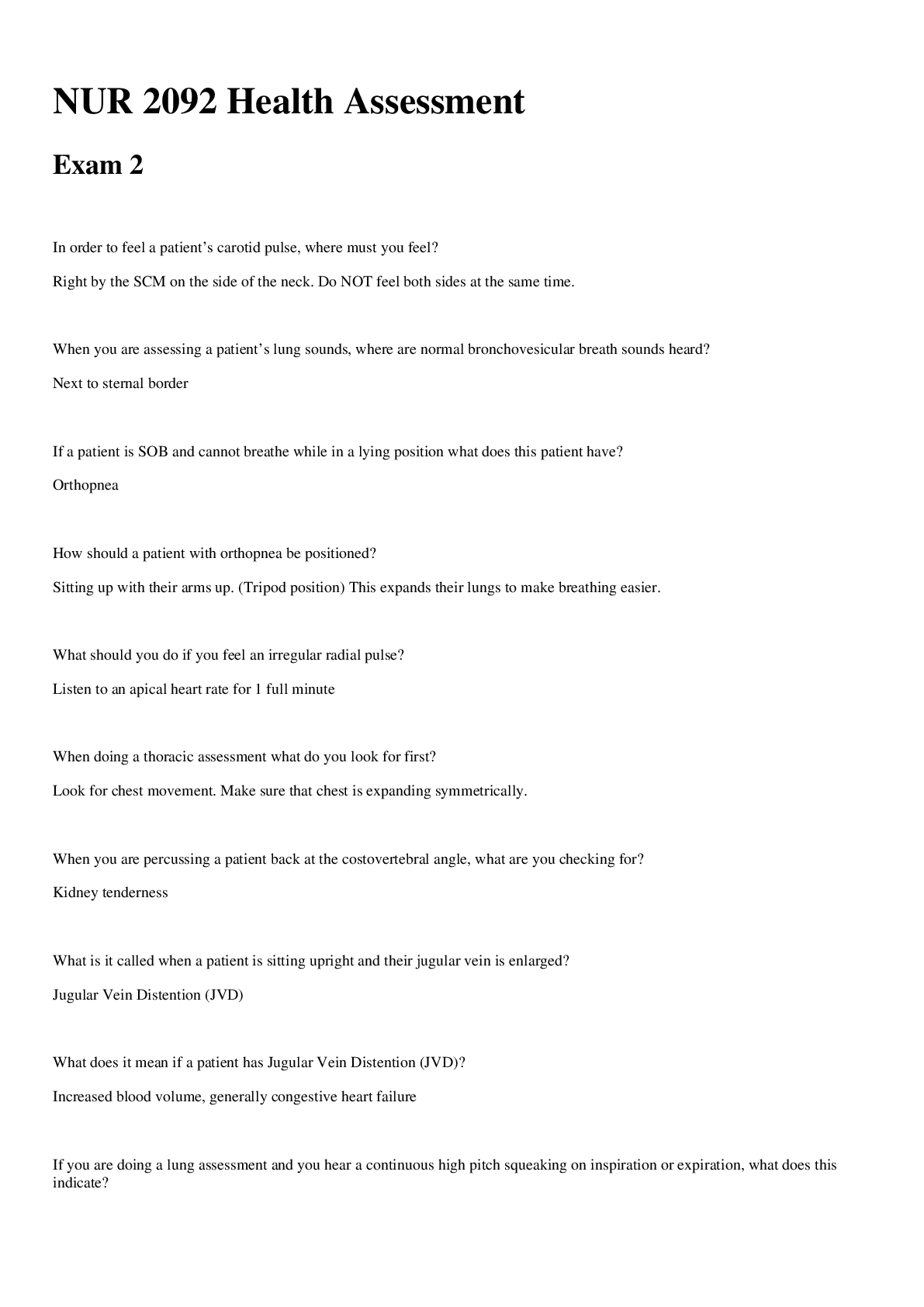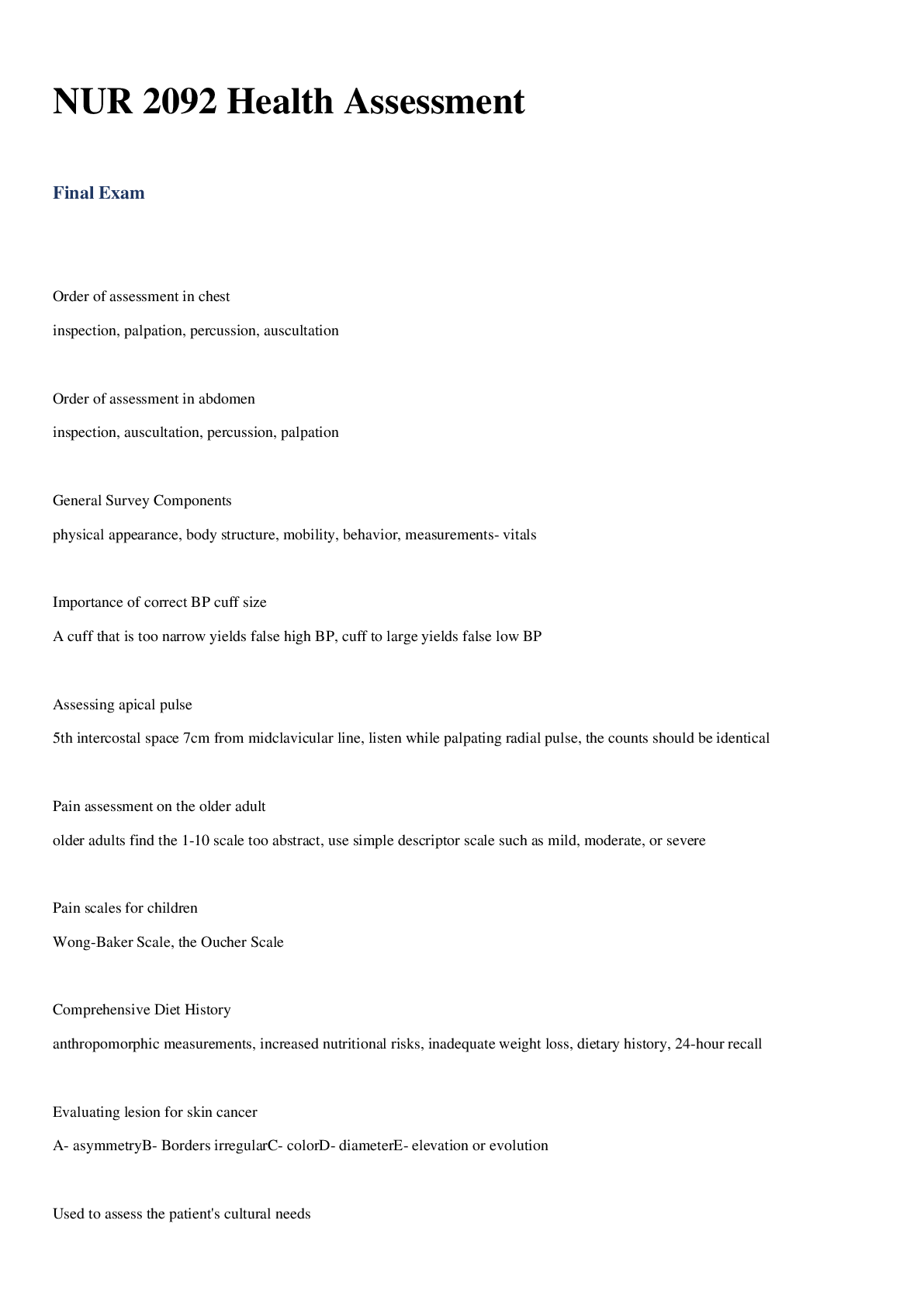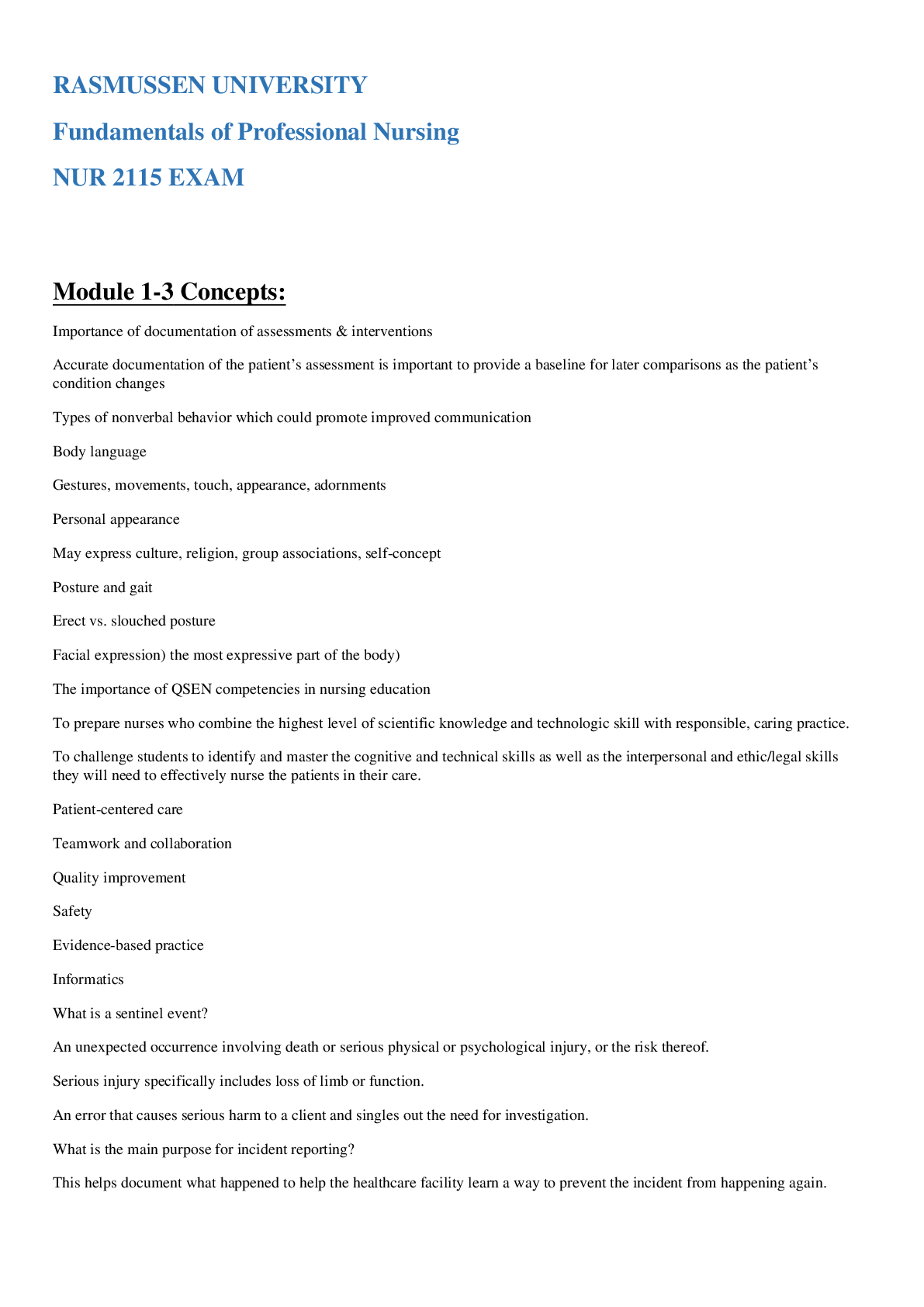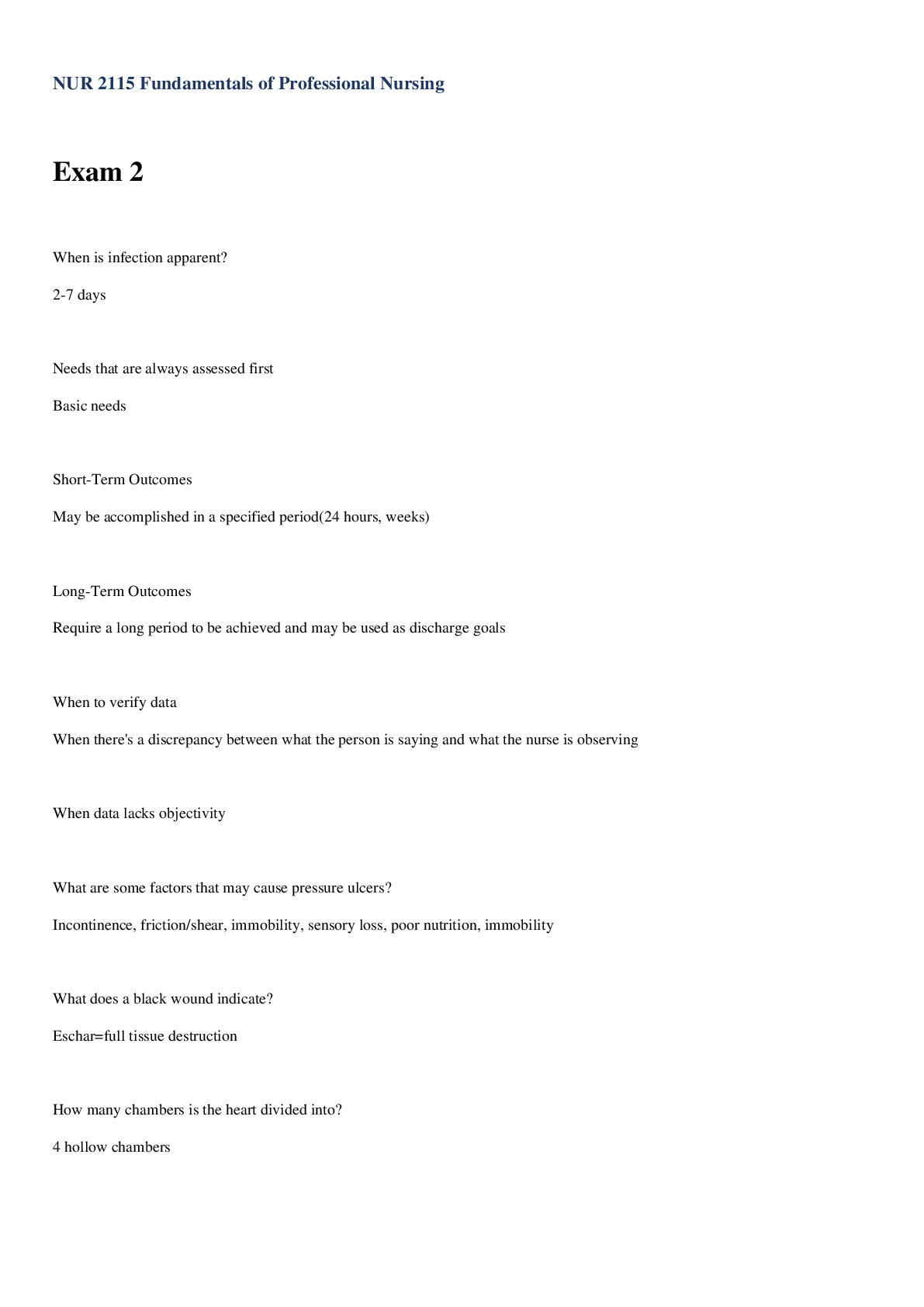Exam |Elaborated| NURS 6521 - Advanced Pharmacology-Walden University
Document Content and Description Below
NURS 6521 - Advanced Pharmacology-Walden University- WK 6 Assignment 2NURS 6521 - Advanced Pharmacology-Walden University- WK 6 Assignment 2Diabetes is a term that is used to represent a clinically an ... d genetically heterogeneous group of disorders that is characterized by an abnormally high glucose level called hyperglycemia (Arcangelo & Peterson, 2013). Hyperglycemia is a result of insulin deficiency or the cellular resistance to what insulin does in the body. According to Arcangelo & Peterson, thereare four major classifications of diabetes. However, for this paper, three types will be discussed, type 1, type 2 and gestational. There will be an emphasis on type 2 diabetes. Pathophysiology Type 1 diabetes used to be considered juvenile diabetes. However, now it is referred to as type 1 because the disease can occur at any age. With type 1 type pancreatic beta cells are damaged and this causes an absence of insulin. They type of diabetes can be distinguished by thepresence of absence of islets with type 1 all, or a subset of inlets lack all insulin secreting beta cells and are usually in a lobular form (Babu & Eisenbarth, 2012). With the islets infiltrated, the insulin reserve steadily decreases until it can no longer maintain a normal blood glucose levelDiabetes is a term that is used to represent a clinically and genetically heterogeneous group of disorders that is characterized by an abnormally high glucose level called hyperglycemia (Arcangelo & Peterson, 2013). Hyperglycemia is a result of insulin deficiency or the cellular resistance to what insulin does in the body. According to Arcangelo & Peterson, thereare four major classifications of diabetes. However, for this paper, three types will be discussed, type 1, type 2 and gestational. There will be an emphasis on type 2 diabetes. Pathophysiology Type 1 diabetes used to be considered juvenile diabetes. However, now it is referred to as type 1 because the disease can occur at any age. With type 1 type pancreatic beta cells are damaged and this causes an absence of insulin. They type of diabetes can be distinguished by thepresence of absence of islets with type 1 all, or a subset of inlets lack all insulin secreting beta cells and are usually in a lobular form (Babu & Eisenbarth, 2012). With the islets infiltrated, the insulin reserve steadily decreases until it can no longer maintain a normal blood glucose level [Show More]
Last updated: 3 years ago
Preview 1 out of 7 pages

Buy this document to get the full access instantly
Instant Download Access after purchase
Buy NowInstant download
We Accept:

Reviews( 0 )
$8.50
Can't find what you want? Try our AI powered Search
Document information
Connected school, study & course
About the document
Uploaded On
Sep 24, 2021
Number of pages
7
Written in
All
Additional information
This document has been written for:
Uploaded
Sep 24, 2021
Downloads
0
Views
129




